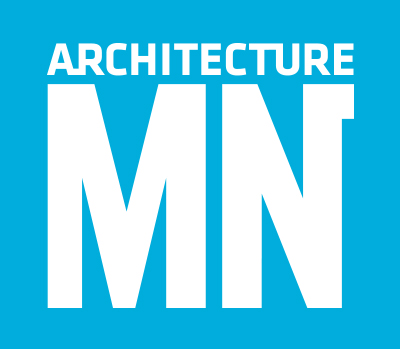A roundtable interview with the team that has shaped and administered Minnesota’s robust, nation-leading energy management system for public buildings
Interview by Mary-Margaret Zindren
Reducing the energy we use and the carbon we produce is an easy cause to get behind, whether we’re trying to save money, curb climate change, or minimize our dependence on foreign oil. But it’s one thing to pursue energy savings and carbon reduction; it’s quite another to aim to, by 2030, make all new public buildings “net zero”—an achievement in which the total amount of energy used annually by a building is roughly equal to the amount of renewable energy created onsite.
In Minnesota, we’re on track to reach that net-zero goal thanks to two intertwined, groundbreaking efforts: the B3 Benchmarking program, which tracks and summarizes the energy consumption, energy costs, and carbon emissions for all public buildings; and Sustainable Building 2030 (SB 2030), an energy standard enacted by the Minnesota State Legislature that sets out progressively ambitious energy targets for all state-funded projects. Together, B3 Benchmarking and SB 2030 have established a powerful, practical, data-driven approach to energy reduction—a living, iterative, increasingly impactful cycle of continuous improvement.
To learn more about B3’s past, present, and future, Architecture MN sat down with four key players in the effort: Rick Carter, FAIA, Integrative Design Team leader at LHB; Richard Graves, AIA, director of the University of Minnesota’s Center for Sustainable Building Research; Tom McDougall, Assoc. AIA, past president of and recently retired from the Weidt Group; and Janet Streff, recently retired from the State Energy Office, which is housed in the Minnesota Department of Commerce.
So this team has been working on B3 from the very beginning, back in 2001?
Janet Streff: Yes—essentially, the same partners were there from the start. We put out an RFP from the departments of Administration and Commerce, and the proposal we chose was the team from the Weidt Group, LHB, and the Center for Sustainable Building Research [CSBR]. This Minnesota team was the only one to have the vision of creating design guidelines for new buildings to be followed by benchmarking to ensure that new data was continually fed into a building’s performance equation. B3 includes the benchmarking tool as well as the design guidelines. In 2009, the Legislature required the addition of a net-zero energy standard to the design guidelines—SB 2030.
Tom McDougall: Because the Weidt Group specializes in energy-data modeling and analysis, we’ve had the role of developing the benchmarks for energy consumption.
Richard Graves: John Carmody, the former director of CSBR, created the guidelines, making sure the latest research in green building informed the effort. We still have this role today, focused on sustainable, resilient design and construction. Part of what attracted me to come to Minnesota to head the CSBR was the B3 program.
Rick Carter: At LHB, we’ve been the project managers and implementers. We’ve been the architects and engineers primarily responsible for testing out the benchmarks in our designs and informing the refinement of the guidelines based on our experience.
Streff: When these architects put together their response to the RFP, they really had a vision. They asked, “How can we build the best buildings possible in Minnesota? How can they be as efficient, durable, and beautiful as they can be? And then how can we make sure that these buildings continue doing what we thought they would be doing?”
McDougall: That’s really the core of B3: It’s a measurement system for setting goals. We simulate and model to figure out if we’re meeting our goals. At the end of the day, we actually measure the energy consumption of every building that goes through the benchmarking system and compare its performance to the goals.
Graves: We don’t just do models and say, “Well, I think this building will be better.” We actually know.
McDougall: When we find that some buildings aren’t going to meet their goals, we learn why they’re not and figure out how we’re going to be able to correct the issues. And for the next building that gets built, we’ll apply what we’ve learned from the performance of similar buildings. It’s time that this sort of research and benchmarking gets done in a widespread way. It’s just good science.
Carter: This is sort of your dream job, from an architect’s perspective. Janet said, “Here’s the program: You’re going to do work, and you’re going to measure how it performs. You’re going to learn from it, and then we’ll redo the guidelines based on what you learn. We’re going to commit to it over a long period of time.” In effect, what Janet did with this project was put together an intelligent system with a feedback loop and commit to it over time. Wonderful.
McDougall: B3 puts us on the path to zero carbon emissions. That’s a goal set out by SB 2030. What we’ve developed here with B3 is a measurement system that can be applied comprehensively. It can measure any kind of building, against benchmarks specific to that building type, customized to Minnesota’s climate and conditions. That’s truly unique. No other state is doing this.
Graves: What I see in B3 is some of the essential components of the future of green-building programs. It’s performance-driven, and that’s something to build on, that can help inform not only doing better buildings in Minnesota but also LEED and other programs like the International Green Construction Code.
McDougall: We’re spearheading a different way forward—different from what was started with the Industrial Revolution 150 years ago. The way we’ve been creating and using energy is not a way that can continue. We have to start changing course, and that’s what B3 and SB 2030 are about.
Streff: The B3 benchmarks have been an extremely valuable tool for our public sector to use—not just State buildings, but all public buildings.
By 2030, do you expect there will be zero carbon emissions for all public buildings in Minnesota?
Streff: Well, to be clear, while it’s encouraged for all buildings in Minnesota, SB 2030 is only required for new public buildings or big renovations of public buildings. So it’s not going nearly as fast as we think it should in order to meet the goals for reducing greenhouse-gas emissions set out by the Legislature in 2007.
McDougall: To reduce the amount of energy needed to build a building, it’s going to take all of our related industries working together. It will take architects, engineers, and building owners. It will take the trades—electrical, mechanical, and carpentry. It’s going to take all of us to build better buildings that conserve energy. And if B3 were accepted as a performance-based code—an alternative to the prescriptive building codes we’re dealing with today for private-sector buildings—then we could really make a difference.
Carter: Prescriptive codes say, “Thou shalt put in this kind of glass,” and “Thou shalt put in this kind of insulation.” You can do that, but you don’t know what effect you’re really having. Instead, B3 says, “Here’s the energy consumption of your building per square foot for this building type, and here’s what it should be.” The B3 case studies help show how architects and their partners have worked to close the gap and meet the benchmark. If the B3 program were instituted as a statewide building code today, we’d have a pretty good chance of getting to our goal of net-zero carbon emissions by 2030.
Graves: A study conducted on the cost of carbon-reduction efforts looked at making B3 code for all buildings. It found that the cost of implementation is far outweighed by the dollars and societal benefits gained.
Carter: It actually saves money.
Saves taxpayers money?
Graves: Yes—taxpayers and the public of Minnesota as a whole. It also gives Minnesota architects a competitive advantage in knowing how to build better buildings. I don’t think anyone’s ever quantified it, but in my conversations with the firms that are doing work to the B3 benchmarks, I understand they’re exporting those services to other parts of the country and the world. That’s real economic value our architecture community is creating. Unfortunately, as things stand, Minnesota cities aren’t allowed to create a code that’s stricter than the current state building code. Their hands are tied.
Streff: We’re hopeful that state-building-code folks will adopt this as an option through an appendix chapter, which wouldn’t require any additional State legislation.
Beyond working toward broader application of B3 beyond public buildings, what else is in the works?
McDougall: One thing has to do with the fact that B3 and SB 2030 have guidelines beyond energy. There’s something new called the operations module that’s almost like car maintenance. Just like you get a notification that it’s time to take your car in for an oil change, there are things you need to check in a building. Let’s say you held a special event and the time clock for the building’s lighting system was changed from the usual approach of turning off at midnight; now the system is running all night because someone forgot to change it back. The operations module is designed to help catch these errors that waste energy.
Graves: We’re also working on metrics that have to do with post-occupancy evaluations and how to measure building benefits to human beings. We’re asking questions like “Do people have enough light to do their tasks?” and “How are the acoustics?” Down the road, there will be some findings coming out of the post-occupancy evaluations that will lead to standards on acoustics and lighting.
Carter: We’ve been doing case studies of what’s worked in the past, and that’s awesome—we need to keep doing that. But to hit these increasingly difficult targets, we need to start prototyping the future. We’ve started to do some of this so that the design community doesn’t have to go down every rabbit hole. We can say, “We’ve explored that path and found that those particular mechanical systems won’t get you to the benchmark.” We can do some of these prototypes on the most common building types to give people a head start.
So why has this come about in Minnesota, and not in the 20 or so other states that have passed goals similar to SB 2030?
McDougall: We’ve tried to do benchmarking in lots of different states, and there’s something unique here. I’ve spent some time thinking about this and believe it has a lot to do with our land. Minnesota has a beautiful landscape with more than 10,000 lakes. We’ve gone through Independent governors, Republican governors, and DFL governors during the course of the B3 program, and they have all maintained its funding and support. I think there is an environmental ethic here in this state that allows us to have this long-term consistency of environmental vision.
Graves: It also has a lot to do with the great architecture community we have here in Minnesota. The designers who are using B3 are very close to us, and if we get something wrong they don’t just say, “That’s not right.” They come to our offices and say, “What if we did it this way?” They’re smart enough to be collaborators and propose solutions.
McDougall: It’s amazing how far we’ve come. We couldn’t have done it had it been just a three- or four-year program. The long-term commitment from the State and legislators to maintain funding has made a real difference.
And, I should clarify, B3 stands for . . . ?
McDougall: That came from Janet. It stands for “Buildings, Benchmarks and Beyond!”
Streff: I had just watched the movie Toy Story—“To infinity and beyond!” It was going to be some long legislative title, but I thought, “If we’re going to do this, it’s going to be around awhile.” Buildings, benchmarks, and beyond—and we’re already way beyond. As Tom and I retire, we expect those with fewer wrinkles to carry the torch.
McDougall: It will go beyond. In fact, my password is “b3forever.”
Once we publish this interview, you should probably change your password.
McDougall: I actually retire in just a few days, so it’s OK. Go for it.
2030 VERSUS 2030
SB 2030 is notable for adapting Architecture 2030—a 2002 initiative that challenged the architecture and construction community to meet increasingly demanding targets for reducing greenhouse-gas emissions in their buildings—into a state energy standard for all new and renovated public buildings. But there are interesting differences in the two efforts: Early in the timeline, for example, Architecture 2030’s targets are more rigorous, but by 2020 Minnesota’s is the more ambitious program. In addition, Architecture 2030 allows for the purchase of offsite renewable energy to help reach the goals; SB 2030 doesn’t.
For more information on SB 2030 and B3 Benchmarking, including an easy-to-navigate database of case studies of all of the buildings in the B3 program, visit www.b3mn.org.


